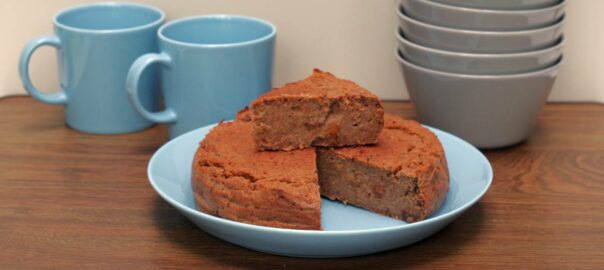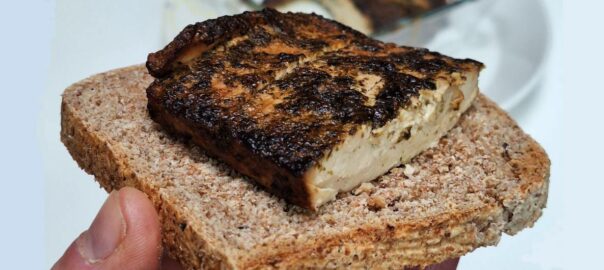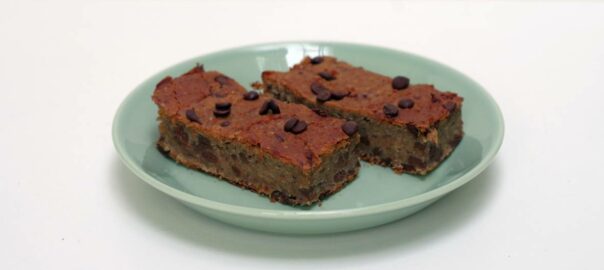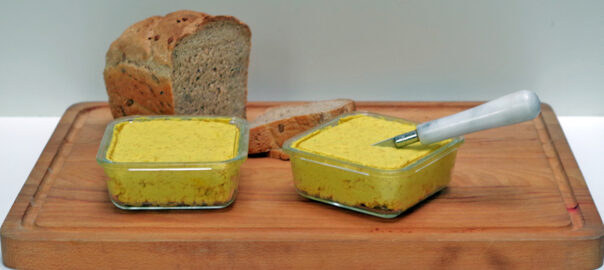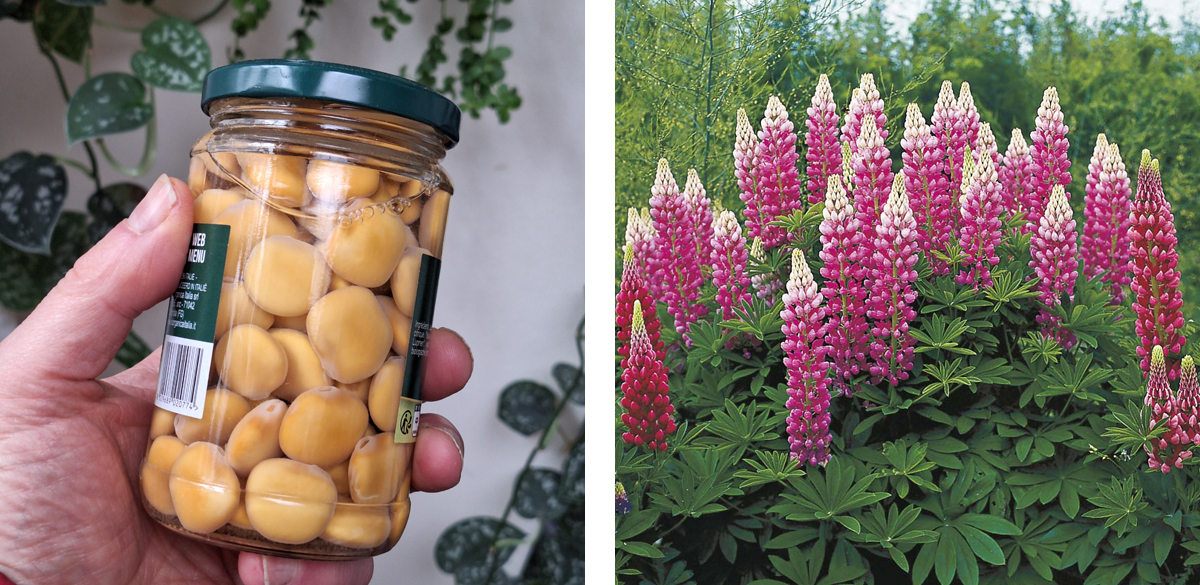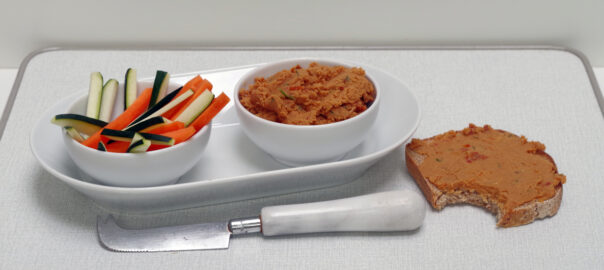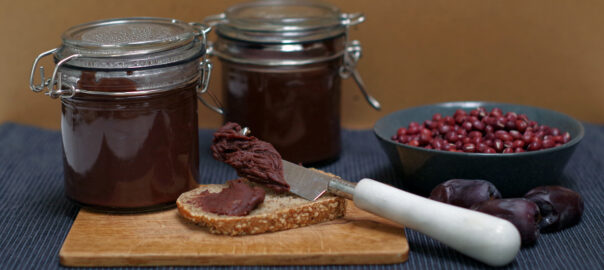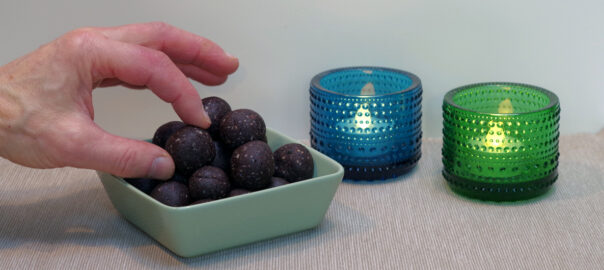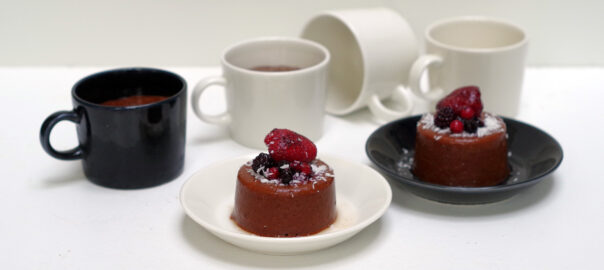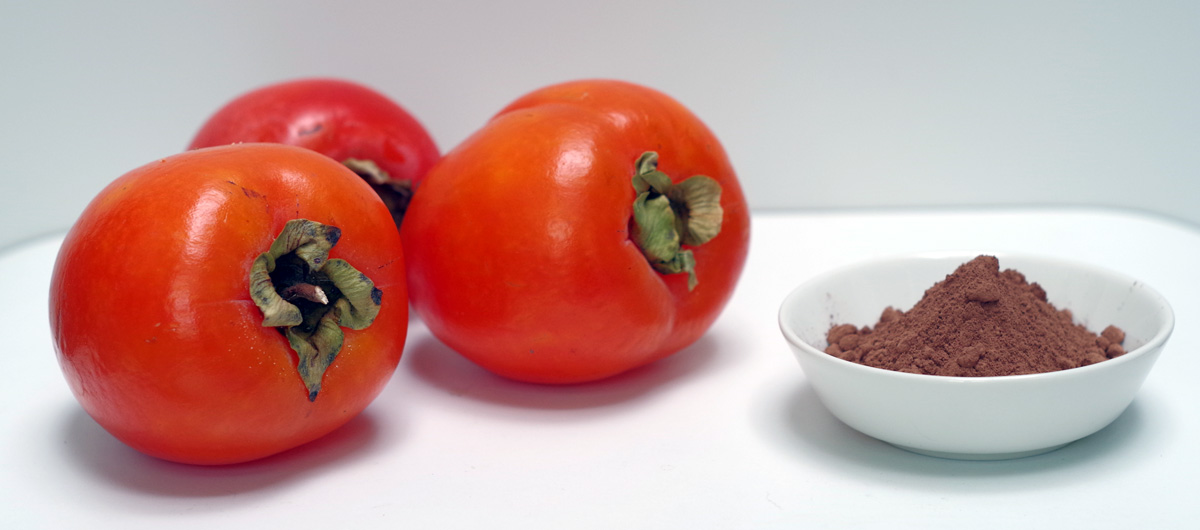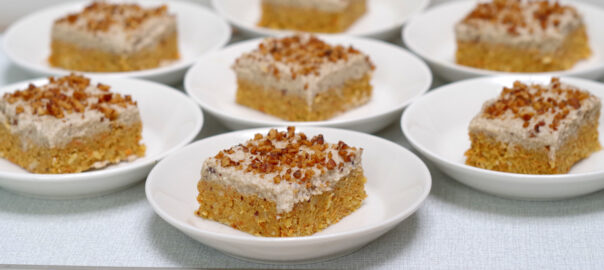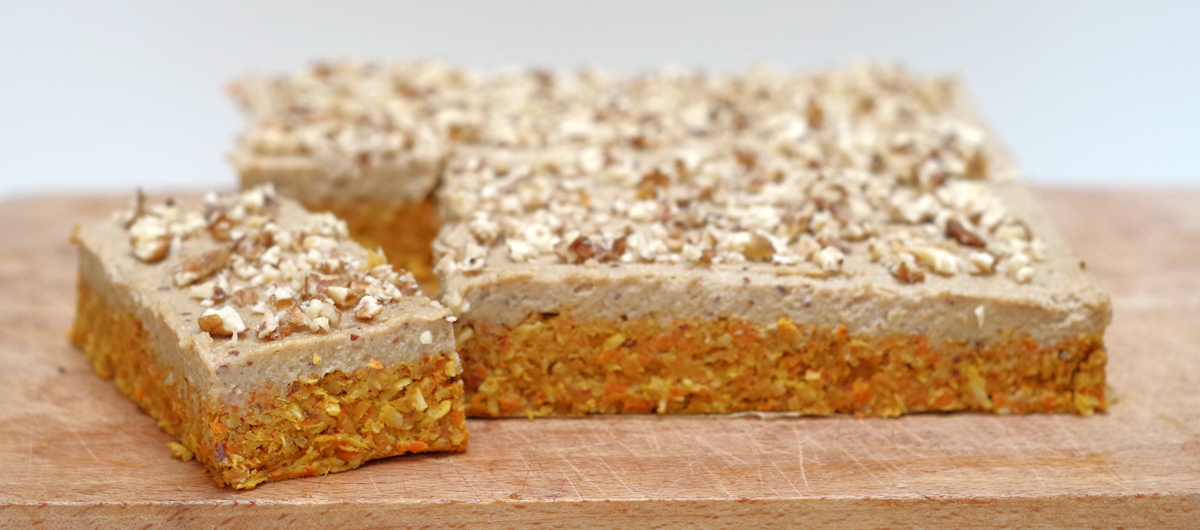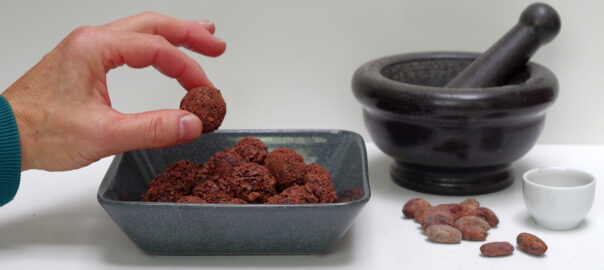Yoga Kitchen – Simple, healthy, and plant-based
Stop waste and give your old bread a second life
Here is a simple recipe for 100% plant-based bread pudding, without animal milk or eggs. Eggs are mainly used in baking because they add a certain structure or texture.
In plant-based cooking, we can solve this by using natural substitutes such as:
- a “flaxseed egg”: two tablespoons of ground flaxseed soaked in three tablespoons of water for half an hour
- a mashed banana
- apple sauce
What ingredients do you need for a pudding about 18 cm in diameter?
- 200 g stale bread
- 50 g raisins, soaked in lukewarm water to rehydrate them, rinsed
- 5 pitted medjoul or mazafati dates, chopped
- 1 ripe banana (brown spots on the skin are a plus)
- 2 tablespoons of ground flaxseed, pre-soaked in 3 tablespoons of water
- 1 tablespoon of cinnamon
- 2 teaspoons of baking powder
- approx. 300 ml plant-based milk, such as soy milk
A pinch of salt is not necessary because bread already contains (more than enough) salt.
Preparation
It’s very easy.
Pre-soaking the bread, flaxseed, and raisins
- Break or cut the bread, including the crusts, into pieces.
- Place the pieces of bread in a sealable container and pour the plant-based milk over them. Mix well.
- Place in the refrigerator for a few hours or overnight to soften the stale bread.
- Pour the raisins into a small bowl and immerse them with water and leave to soak.
- Drain the raisins and rinse them.
- Mix the 2 tablespoons of ground flaxseed with three tablespoons of lukewarm water and leave to swell for half an hour.
Make and bake the pudding
- If you have a regular oven, preheat it to 180°C. If you have a convection oven, preheating is not necessary.
- Put all the ingredients except the raisins in a food processor with an S-shaped blade and blend until smooth.
- Then add the raisins and mix.
- Take a baking tin (round, approx. 18 cm, or square, 18 x 18 cm).
- Line the baking tin with baking paper or grease the sides and bottom with oil.
- Pour the batter into the tin and spread evenly.
- Place in the bottom of the oven and bake at 180°C for 35 to 40 minutes.
- After baking, remove from the oven, allow to cool slightly, then remove the pudding from the pan and place on a wire rack to cool further.
That’s it!
This delicious bread pudding will keep in the refrigerator for a few days, but I’m sure you’ll devour it in no time.
Congratulations: you’ve transformed your stale bread into a nutritious pudding that you can enjoy for breakfast.
About food waste
Food waste is a huge problem in our time. It is also one of the reasons why modern agriculture has such a high ecological footprint. After all, we don’t eat a large part of the food that is grown and produced, and it goes straight into the trash. For a long time, I thought that most food was wasted in supermarkets. This is because the shelves are always kept full and many products pass their expiration date.
This now appears to be incorrect. Statistically speaking, we waste most food at home, in our households. So, as consumers, we have a lot to answer for.
Previous generations were much more adept at finding solutions to ensure that nothing went to waste.
Bread pudding is an example of such a solution. Traditional bakers do it too: they turn unsold bread and pastries into something new. As a child, I always thought it was delicious and filling, a real treat.
Vegan bread pudding, per 100 g of product
The values are approximate and based on the use of whole wheat bread and soy milk.
| Energy | Carboh. | Sugars | Fat | Sat. Fat | Protein | Fibre | Salt |
|---|---|---|---|---|---|---|---|
| 595,65 kJ/142,50 kcal | 27,60 g | 12,54 g | 2,54 g | 0,37 g | 5,35 g | 3,76 g | 0,25 g |
Participate in our cooking classes:
Read more about plant-based nutrition and health:
Read more about plant-based food
Find out about yoga and yoga classes in Schaerbeek:
Check out our yoga classes here:

